Inside The New York Botanical Garden
Posted in Shop/Book Reviews on May 7 2009, by Plant Talk
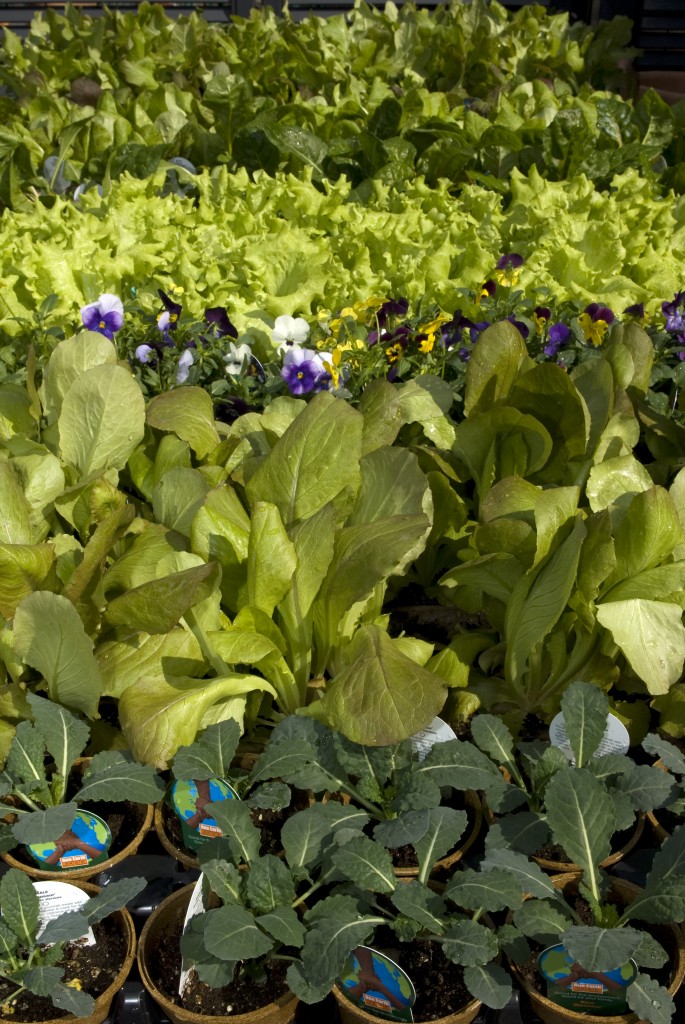
Throughout the planting and growing season you’ll find many varieties of USDA-certified organic edible greens, herbs, and vegetables available at Shop in the Garden, where you can also pick up tools, gloves, rain barrels, and more. Each purchase you make helps to support the many programs of The New York Botanical Garden.
Posted in Learning Experiences, People on May 6 2009, by Plant Talk
Graduating from the School of Professional Horticulture (SOPH) is much like any galvanizing event, as now my life is divided in two: “before SOPH” and “after SOPH.” Being a SOPH graduate has validated me as a horticulturist and empowered me to practice my skills with confidence. The two-year program is very intense as you do your best to absorb the endless information, learn from practical experience, and engage in the unique opportunities that are only available through the program.
Be forewarned: This is not an easy program; the commitment is enormous. But beyond what you learn in the course curriculum, it is entirely in your hands to seek out everything possible to make your experience that much richer.
Horticulture runs so deep and so wide that the taste I received from SOPH was only the beginning for me. I have grown in many ways from the foundation I built through the program. I am always looking for new ways to learn and to share my conclusions. My growth has revealed itself in my fascination of soil biology, and promoting its health is my professional philosophy. I am now certified by NOFA (Northeast Organic Farming Association) as an organic land-care professional, making the progressive commitment to practice horticulture in harmony with the environment.
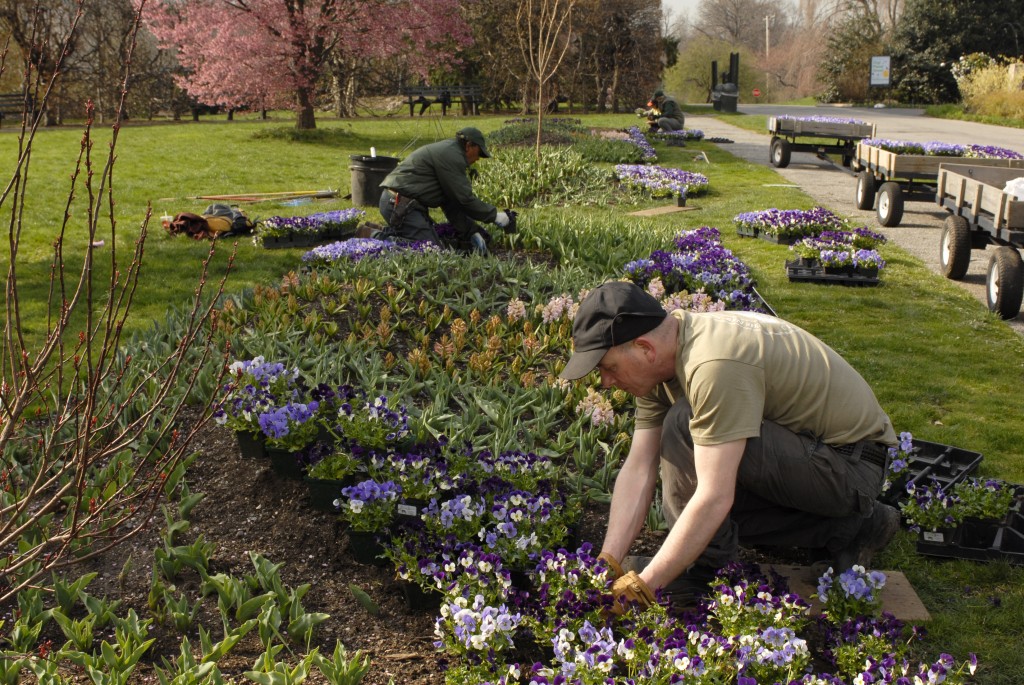
First-year SOPH student John Gunderson (foreground) plants violas in the Class of 2011 Spring Student Garden, located across from the Howell Family Garden.
Thanks to the public speaking classes at SOPH, I have the confidence to give lectures and presentations on garden topics. As a garden communicator, my blog, DirtyHorticulture.com, allows me to reach out to a broad group of gardeners. My consulting and design business, Living Colors Landscape and Gardens, is growing steadily thanks to the passionate clients I’ve acquired.
The climate is changing: not just the environment, but our awareness and actions, too. People are much more aware of their surroundings and are interested in preserving and protecting it. As horticulturists in the 21st century, it is our responsibility to offer comprehensive solutions for private and public spaces that are enjoyable to be in, do not stress our resources, and are prepared and maintained in responsible and accountable ways. We are the natural leaders of this “green revolution,” and so we must be prepared to empower others to follow.
The application deadline for the next SOPH class is August 15.
Posted in Learning Experiences, People on May 5 2009, by Plant Talk
 |
Louis Gagliano, a graduate of Continuing Education’s Floral Design program, is co-owner of Harlem Flo floral atelier, a floral boutique in Manhattan. He will talk about his path to becoming a floral designer at a free Career Information Session on Floral Design, Horticultural Therapy, and Landscape Design on Wednesday, May 13, 6–8 p.m., in the Arthur and Janet Ross Lecture Hall.
|
What is the path that brought you to where you are today? This is always the interesting question people ask when getting to know one another. It may at times be simple and at other times complex. Mine was the latter.
Growing up in a family business, I have always known the responsibility of ownership: Coming in early, leaving late, changing my plans…not the ideal situation but it comes with the territory. Knowing all this, I still chose to open my own floral design business with a partner.
The path to here, though, wasn’t direct. I graduated college with a degree in hotel/resort management and in 1994 went to work for a luxury Hilton hotel. After three years, I heard about this new-ish, booming coffee company called Starbucks and became a manager at one of its stores in New York City. My experience with Starbucks was fantastic and varied. Besides my role as a store manager, I opened new stores, became a training manager for soon-to-be managers and assistant managers, taught the basics of coffee and service, and was head of hiring retail employees for my district.
Seven years later, I left Starbucks and moved to Paris to fulfill a dream of living in one of the most beautiful cities in the world. All along I kept thinking that if I go back to New York City, maybe I should try a new career path.
With many years of managerial experience, well-established skills in customer-service training, a solid foundation in retail management, and an interest in flowers, I started to research areas that would match my strengths. I was returning to New York in June and found the Floral Design Summer Intensive program offered by The New York Botanical Garden.
To learn more about Louis’ experience at NYBG…
Read More
Posted in Gardening Tips, NYBG in the News on May 4 2009, by Sonia Uyterhoeven
Going Native: Azaleas for Everyone
 |
Sonia Uyterhoeven is Gardener for Public Education. Join her each weekend for home gardening demonstrations on a variety of topics in the Home Gardening Center. |
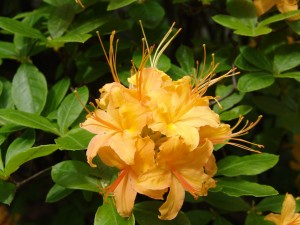 Spring is a season of anticipation and joy. Cheerful bulbs emerge from the ground and cover the landscape with color. Flowering trees and shrubs follow suit in one of the year’s most magnificent displays. As the season unfolds, everything takes its turn providing a symphony of color—magnolias, flowering cherries, azaleas, redbuds, lilacs, and crabapples.
Spring is a season of anticipation and joy. Cheerful bulbs emerge from the ground and cover the landscape with color. Flowering trees and shrubs follow suit in one of the year’s most magnificent displays. As the season unfolds, everything takes its turn providing a symphony of color—magnolias, flowering cherries, azaleas, redbuds, lilacs, and crabapples.
One of my favorite players is the native azalea. It is a versatile plant that is often overlooked by the homeowner. Native azaleas are known for their spectacular bloom in spring. Many are incredibly fragrant, often with a spicy clove scent. A number of them also provide a wonderful show in the fall, with leaves ranging from yellow and burnt orange to fiery red.
Native azaleas have a graceful form that adds height and structure to any woodland garden. Most native azaleas grow from 5 to 8 feet tall, with some of them stretching to 10 feet at maturity. They rarely need any pruning, just an occasional thinning out of congested branches or removal of dead wood. Prune immediately after flowering.
To learn more about native azaleas…
Read More
Posted in Exhibitions on May 1 2009, by Plant Talk
Show Celebrates Henry Hudson 400th
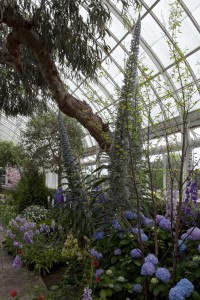 Vibrantly colored flowering bulbs and companion plants take center stage in The Glory of Dutch Bulbs: A Legacy of 400 Years, which opens today and runs through June 7.
Vibrantly colored flowering bulbs and companion plants take center stage in The Glory of Dutch Bulbs: A Legacy of 400 Years, which opens today and runs through June 7.
The exhibition celebrates the 400th anniversary of Henry Hudson’s arrival in New York by bringing a touch of Holland to the Botanical Garden with a Dutch bulb flower show in the Enid A. Haupt Conservatory and a four-season display, including Dutch bulbs, along Seasonal Walk, hands-on activities for families, and programs highlighting the history and influence of the Dutch on New York City.
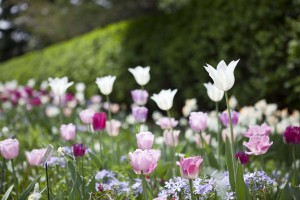
The artful display of bulbs, perennials, and grasses on Seasonal Walk was created by internationally renowned designers Piet Oudolf and Jacqueline van der Kloet, both of the Netherlands. HRH Princess Margriet of the Netherlands and her husband were on hand for the ceremonial planting of Seasonal Walk last fall.
Check out all of Saturday’s programming
Check out all of Sunday’s programming
Posted in Programs and Events on April 30 2009, by Plant Talk

Leading Dealers Showcase Exquisite Pieces
Posted in Learning Experiences, Science on April 29 2009, by Plant Talk
 Robert Naczi, Ph.D., is Curator of North American Botany.
Robert Naczi, Ph.D., is Curator of North American Botany.
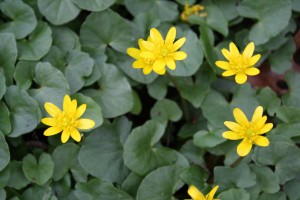 At this time of year, one can hardly miss the grand display of yellow flowers on the floodplain of the Bronx River. The show is especially spectacular from the vantage point of the Magnolia Way bridge at the northern end of the Garden. The view is beautiful, even breathtaking.
At this time of year, one can hardly miss the grand display of yellow flowers on the floodplain of the Bronx River. The show is especially spectacular from the vantage point of the Magnolia Way bridge at the northern end of the Garden. The view is beautiful, even breathtaking.
Alas, all things are not as they seem, and the golden flowers belie a menace. Yes, beautiful, but a menace nevertheless. The profusion of yellow blooms belongs to an invasive species, Ranunculus ficaria, the Lesser Celandine. Lesser Celandine is a species of buttercup (Ranunculaceae), and is not to be confused with Celandine, a member of the Poppy Family (Papaveraceae).
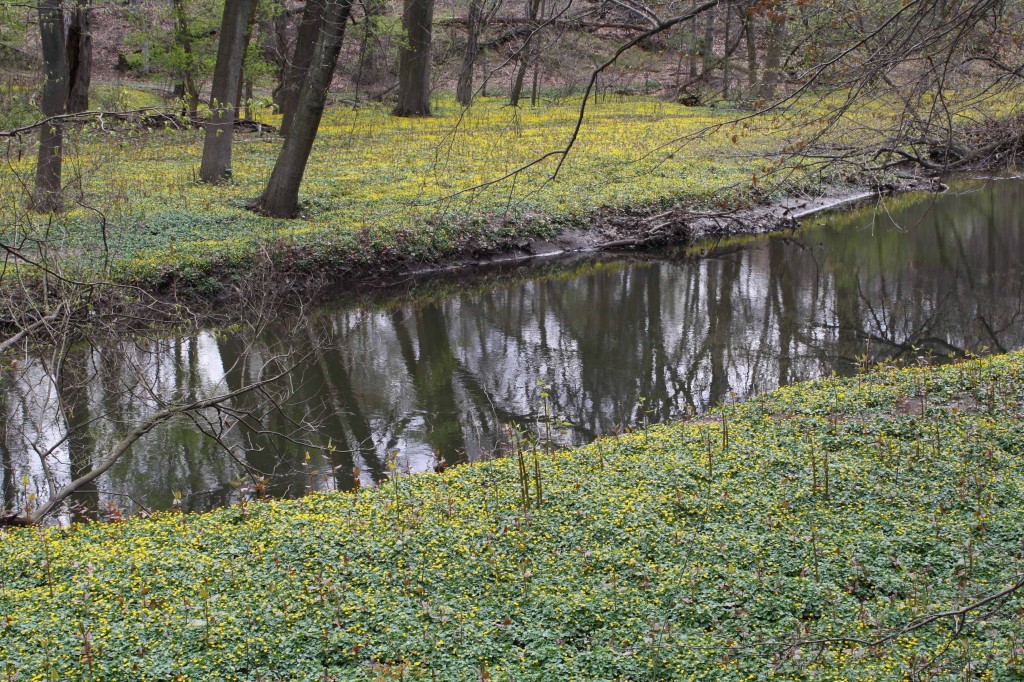
Posted in Exhibitions, Gardens and Collections on April 29 2009, by Plant Talk
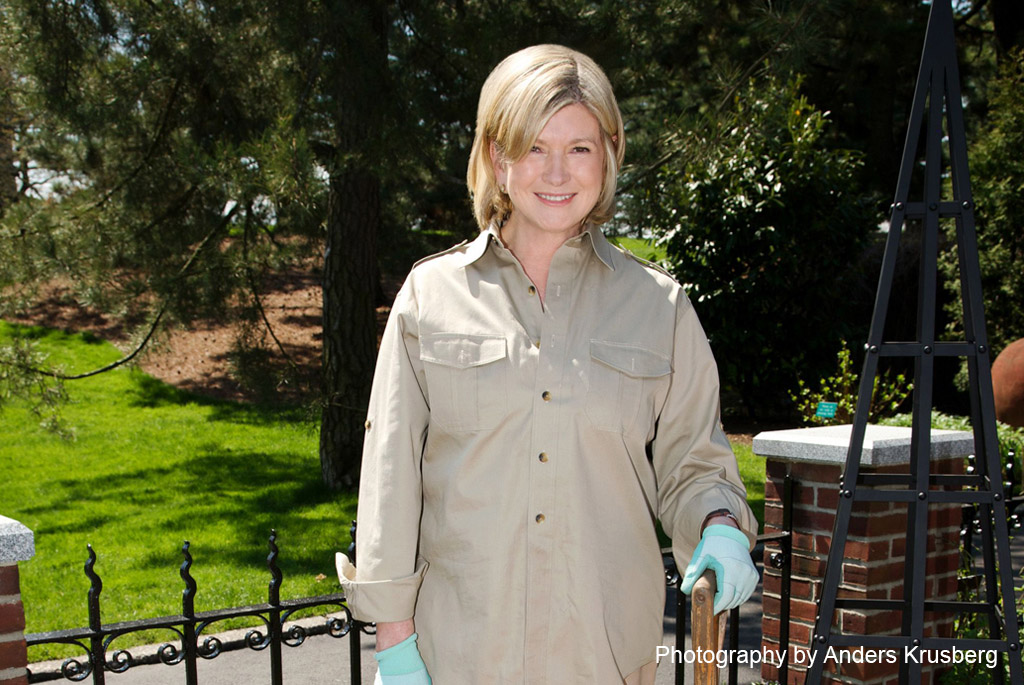
Martha Stewart and her team visited The New York Botanical Garden on April 25 for a ceremonial planting of Martha Stewart’s Culinary Herb Garden, which will be one of the many highlights of The Edible Garden, the upcoming summer-long celebration of growing great food. Click here to download the site plan for the garden.
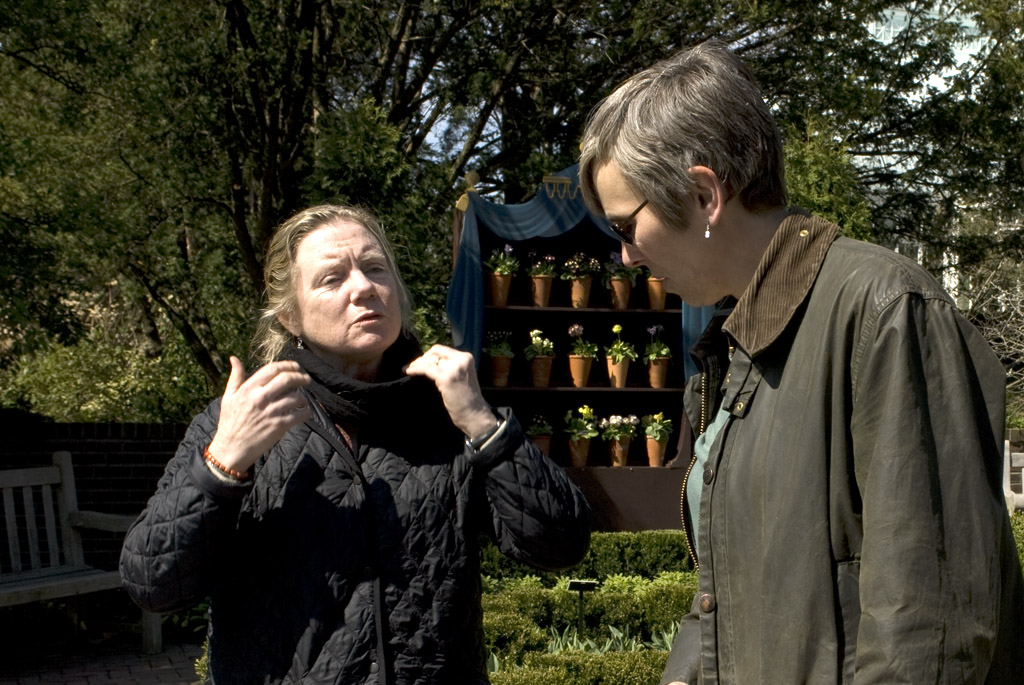
Margaret Falk, Associate Vice President for Landscape, Gardens, and Living Collections, and Kristin Schleiter, Curator of Outdoor Gardens and Herbaceous Collections, plant the Culinary Herb Garden designed by Martha Stewart and her team of gardening experts.
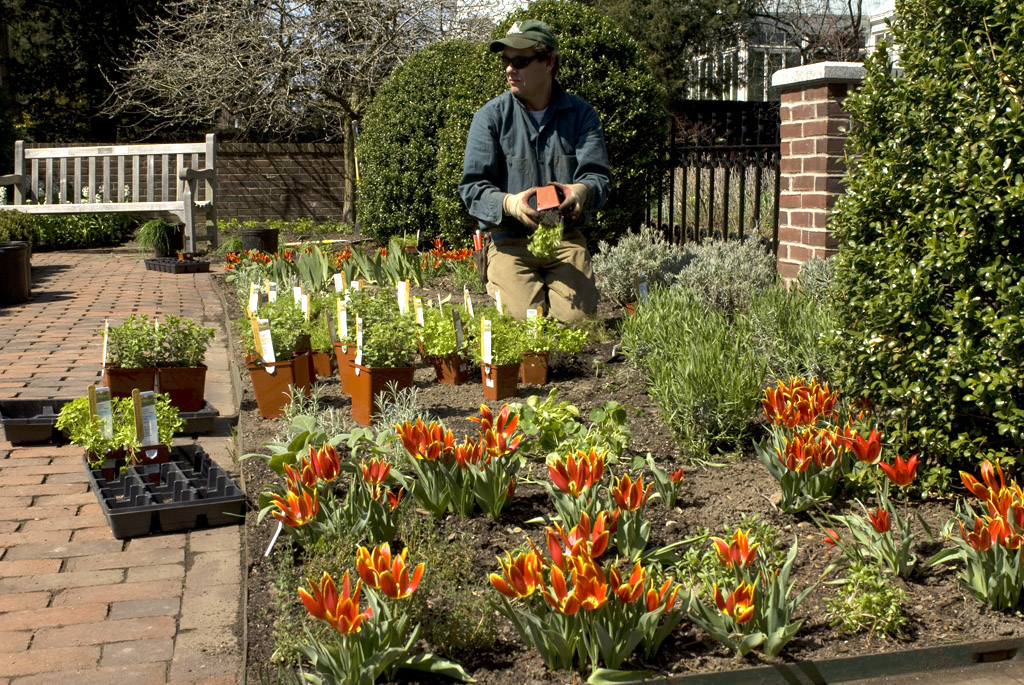
Bruce Dryden, Assistant Foreman of Gardeners, plants Italian parsley and an assortment of other herbs from around the world in Martha Stewart’s Culinary Herb Garden. The newly planted herb garden is just one of the many highlights of The Edible Garden, from June 27 to September 13.
Posted in Learning Experiences, People on April 28 2009, by Plant Talk
 |
Anne Meore is a graduate of Continuing Education’s Horticultural Therapy program and has her own horticultural therapy consulting business, Planthropy, LLC. |
It’s not always easy to see where you are going when on the proverbial “career path.” At times the path tends to be longer than expected and sometimes a bit bumpy. At age 44, I can finally look back with a bit of clarity and see how I finally made it to today.
With advanced degrees in Elementary Education, Psychology, Counseling, and Social Work, I’ve had the opportunity over the years to work with various populations, each with differing needs and more than I could adequately provide for, especially from behind a desk.
But that’s where it began for me. During counseling sessions, something would happen when we fiddled with the plant on my desk, listened to the sounds of birds, smelled the fresh air through the screen, and watched as Mother Nature danced outside the office window. I couldn’t put my finger on exactly what made it work, but I knew it did work. So I began conducting sessions outdoors in the natural world. A novel idea, I thought. I think I will call this therapeutic milieu “horticultural therapy.”
It wasn’t until I received the Continuing Education catalog that I discovered that horticultural therapy wasn’t my invention after all. How naive of me to try to take credit for a field that has been in existence since the time of Egyptian civilization.
I enrolled in Introduction to Horticultural Therapy and was led through the historical background, foundations, and applications of this field by Katherine Sabatino. An experienced horticultural therapist, she was able to take years of personal contemplation and tie it up in a nice big bow for me. My decision was made, my career path defined, with all arrows pointing toward horticultural therapy.
The instructional staff facilitated my learning process throughout the course of study. The expertise and experience of these very people are what distinguishes NYBG’s program from others.
Read More
Posted in Gardening Tips on April 27 2009, by Sonia Uyterhoeven
Woolly Adelgid
 Sonia Uyterhoeven is Gardener for Public Education at The New York Botanical Garden.
Sonia Uyterhoeven is Gardener for Public Education at The New York Botanical Garden.
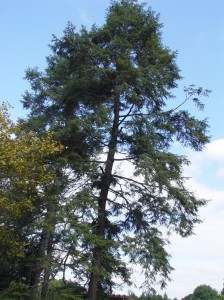 Who’s afraid of the hemlock woolly adelgid? Certainly, many gardeners in the Northeast. Like many pests that plague us, these little creatures were introduced from abroad. In their homeland (Japan) they are kept in check by a type of ladybug that is a natural predator. Here in the United States, though, the woolly adelgid has free range. The only natural challenge it faces is extreme temperatures—once the thermometer drops below 23°F or -5°C, the mortality rate of these fluffy little critters rises.
Who’s afraid of the hemlock woolly adelgid? Certainly, many gardeners in the Northeast. Like many pests that plague us, these little creatures were introduced from abroad. In their homeland (Japan) they are kept in check by a type of ladybug that is a natural predator. Here in the United States, though, the woolly adelgid has free range. The only natural challenge it faces is extreme temperatures—once the thermometer drops below 23°F or -5°C, the mortality rate of these fluffy little critters rises.
So what is hemlock woolly adelgid and why should we be concerned? This pest spends most of its life protected under its telltale fluffy white secretion. You probably have seen it cover the branches of hemlocks. It plants itself at the base of the needles and slowly sucks the sap—and life—out of a tree. This can take anywhere from 1 to 15 years, depending on the tree and environmental situations. While many pests target unhealthy and, therefore, susceptible trees, this pest prefers healthy ones.
For those of you who have grown up on the East coast, as I have, you will appreciate the importance of the Eastern hemlock (Tsuga canadensis) in the landscape. For the homeowner, it is one of the few conifers that make an outstanding addition to a shady border. It has delicate foliage, it can withstand hard pruning, and its lower branches often reach down to the ground, creating a nice, full specimen. It is an important screening and landscape plant.
What you may not have thought about is the important role that it plays in the ecosystem. This shade-tolerant tree grows slowly into giants in the forest, creating cool, shaded areas by stream and river beds that allow many fish and aquatic invertebrates to thrive.
To learn what you can do to help your hemlocks fight the woolly adelgid…
Read More






 Spring is a season of anticipation and joy. Cheerful bulbs emerge from the ground and cover the landscape with color. Flowering trees and shrubs follow suit in one of the year’s most magnificent displays. As the season unfolds, everything takes its turn providing a symphony of color
Spring is a season of anticipation and joy. Cheerful bulbs emerge from the ground and cover the landscape with color. Flowering trees and shrubs follow suit in one of the year’s most magnificent displays. As the season unfolds, everything takes its turn providing a symphony of color Vibrantly colored flowering bulbs and companion plants take center stage in
Vibrantly colored flowering bulbs and companion plants take center stage in 


 At this time of year, one can hardly miss the grand display of yellow flowers on the floodplain of the Bronx River. The show is especially spectacular from the vantage point of the Magnolia Way bridge at the northern end of the Garden. The view is beautiful, even breathtaking.
At this time of year, one can hardly miss the grand display of yellow flowers on the floodplain of the Bronx River. The show is especially spectacular from the vantage point of the Magnolia Way bridge at the northern end of the Garden. The view is beautiful, even breathtaking.




 Who’s afraid of the hemlock woolly adelgid? Certainly, many gardeners in the Northeast. Like many pests that plague us, these little creatures were introduced from abroad. In their homeland (Japan) they are kept in check by a type of ladybug that is a natural predator. Here in the United States, though, the woolly adelgid has free range. The only natural challenge it faces is extreme temperatures—once the thermometer drops below 23°F or -5°C, the mortality rate of these fluffy little critters rises.
Who’s afraid of the hemlock woolly adelgid? Certainly, many gardeners in the Northeast. Like many pests that plague us, these little creatures were introduced from abroad. In their homeland (Japan) they are kept in check by a type of ladybug that is a natural predator. Here in the United States, though, the woolly adelgid has free range. The only natural challenge it faces is extreme temperatures—once the thermometer drops below 23°F or -5°C, the mortality rate of these fluffy little critters rises.